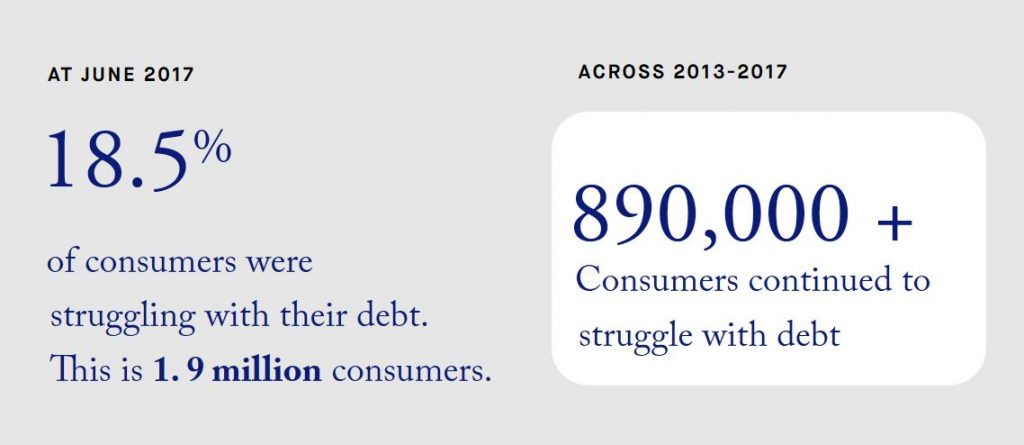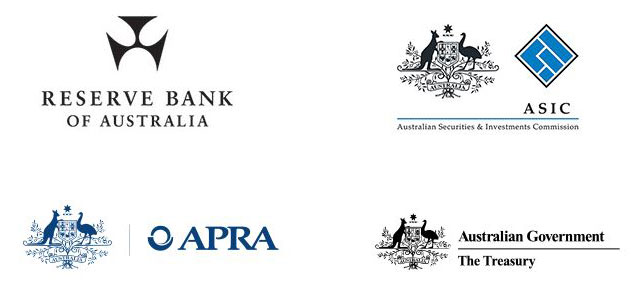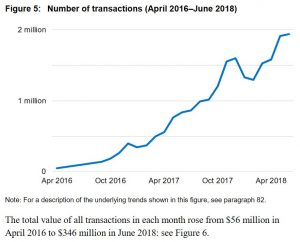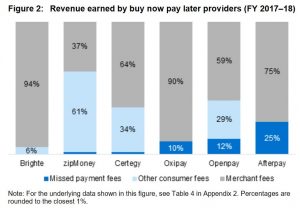She updated their views on responsible lending, and their new approach to getting better data on the sector. They also to publish a consultation paper on RG 209 revisions and enhancements.
Responsible lending
The National Consumer Credit Protection Act includes an array of obligations designed to protect consumers. Chief among them are the responsible lending provisions – a set of obligations that require lenders and mortgage brokers to do three things before offering a loan to a consumer:
- One – the lender or broker must make reasonable inquiries into the requirements, objectives and financial situation of the consumer.
- Two – they then need to verify the financial situation of the consumer.
- Three – the lender or broker must then make an assessment or preliminary assessment (respectively) of whether the proposed loan is unsuitable for the consumer.
Lenders also have an obligation not to enter into an unsuitable loan contract with the consumer.
The responsible lending provisions are not designed to protect those who invest in residential mortgage-backed securities or other consumer debt securities. However, by protecting consumers in the manner I’ve just described, the provisions necessarily afford investors some secondary protection.
This also means that a failure by a bank that either issues, or sells loans to issuers of, residential mortgage-backed securities to lend responsibly harms both borrowers and investors. As ASIC goes about its responsible lending work, we are cognisant of this fact.
That said, as we all appreciate, compliance with the responsible lending provisions by securitisers alone does not automatically mean a AAA grade rating for a tranche of securities. The provisions set the minimum standard.
ASIC expects and encourages lenders to think about how they can ensure loans provided to consumers are not only ‘not unsuitable’ in accordance with the language of the National Credit Act, but also ‘suitable’ – properly designed and priced to meet the needs of the consumer.
Responsible lending should not be a static, mechanical process devoid of common sense, nor a checkbox exercise. It should be a dynamic, evolving process that looks to continually improve credit quality through the adoption of new practices and new technology, underpinned by basic common sense.
Investors in residential mortgage-backed securities should be looking to those lenders that make this commitment to ongoing improvement.
I should also say something about low-doc loans at this point. As you’ll be aware, many mortgage pools will include some portion of low-doc loans. The definition of a low-doc loan can vary. Nevertheless, it must be said that the idea of a loan provided to a consumer after taking less than reasonable steps to verify the consumer’s financial situation (by obtaining and reviewing reliable documentation) is fundamentally incompatible with responsible lending.
Investors should be wary of the additional credit and regulatory risks that low-doc loans involve.
There is also a move away from what’s termed ‘low-doc loans’ to the more popular ‘non-confirming loans’. It is fair that all consumers capable of repaying a loan have the opportunity to apply for one, even where the consumer’s circumstances are unusual. But insofar as the phrase ‘non-conforming loans’ could be used as a euphemism for a low-doc or risky consumer loan, our warning remains: lenders and investors face not only higher credit risks, but also the risk of a regulatory response in these situations.
As we begin to see some examples of mortgage stress, particularly as interest rates rise, it becomes more important for investors to be discerning about the securities they invest in. Investors must consider how the mortgage lender goes about lending responsibly.
ASIC’s recent responsible lending initiatives
ASIC’s recent responsible lending initiatives have been informed by three priorities:
- Promote responsible lending and appropriate responses to financial difficult
- Address the mis-selling of products and promote good consumer outcomes, and
- Respond to innovation in financial services and consumer credit and facilitate appropriate reform.
Let me update you on some our initiatives now.
Loan application fraud
ASIC has focused on loan application fraud for some time.
The falsification of loan documents by brokers and lender employees can undermine the integrity of the responsible lending provisions and lead to consumer harm where borrowers obtain loans they can’t afford. It can also harm investors if the loan is securitised.
Insufficient controls to address the risk of loan application fraud and incentive structures that reward poor behaviour jeopardise trust and confidence in the financial sector.
We recognise that lenders have a significant interest (both financial and regulatory) in detecting and responding to loan fraud and ensuring consumers can repay the loans offered to them.
In many cases where we are alerted to alleged loan fraud involving brokers or lender employees, the matters have been brought to our attention by industry, or an industry association, which has already suspended or terminated the individual’s employment, accreditation or aggregator agreement.
We have taken a strategic approach, including civil penalty proceedings against ANZ (Esanda) for breaches of the responsible lending provisions, as they relied on information in falsified payslips submitted by brokers where it had reason to doubt the reliability of that information.
In its judgment, the Court made clear that where unlicensed brokers submit loan applications in reliance on the ‘point of sale’ exemption in regulation 23 of the National Credit Consumer Protection Regulations, lenders have a greater obligation to exercise care. This was the basis for the higher penalties imposed on ANZ relating to the loans submitted by one of the brokers under the point of sale exemption.
In line with our strategic approach, we are undertaking an industry review to better understand the type and level of fraud faced by industry, and how industry goes about preventing, detecting and responding to it.
We are collecting information on industry controls and processes, with a view to promoting best practice. This will help us to improve public confidence in controls for preventing, detecting and responding to loan fraud.
We have met with all of the review participants and have commenced a data collection phase involving selected lenders and aggregators. We expect to release a report next year.
Motor vehicle finance
We are undertaking a review of the car finance industry’s compliance with regulatory obligations relating to responsible lending, collections and hardship.
Our recent work in the car finance industry has identified poor practices such as:
- lenders offering loans to consumers that they cannot afford
- lenders failing to make reasonable inquiries into, and to verify information about, the consumer’s financial situation, and
- consumers being denied important protections under the National Credit Act because of car dealers misrepresenting the loan as a business loan.
We are collecting information from several car financiers to:
- understand current trends and practices in the car finance industry
- assess the adequacy of their responsible lending, hardship and debt collection processes, and
- identify areas of concern or risks that might affect consumers.
We plan to use the findings from the review to drive improved standards of conduct and compliance with regulatory obligations across the industry, including financiers who regularly issue consumer debt securities.
We expect all participants will improve their practices and develop remediation programmes to respond to past instances of poor conduct.
Where we identify concerns, we will be commencing investigations with a view to enforcement action. We have already seen BMW Finance pay $77 million in Australia’s largest consumer credit remediation program. Other financiers engaging in similar conduct can expect a strong response.
We recently issued pilot surveys to participants to obtain feedback on the availability of the data required for the review, with the aim of understanding the systems and methods of data collection and storage. We will use the information provided to further refine our future data requests.
Recurrent data requests
We have also commenced a pilot to obtain home loan data on a recurrent basis.
We will review the results of the pilot in 2019 to assess how to roll out recurrent data requests more broadly.
We will be able to use this data in a number of ways, including to identify potential trends and issues that can help us prioritise regulatory actions and provide feedback to industry. We also envisage releasing the aggregated data to inform consumers and investors more broadly.
We acknowledge that recurrent data collection will have a cost impact on industry, which is why conducting the pilot is so important. We are working with industry and other parts of the government to do this in the most efficient way possible.
By obtaining recurrent granular data, our vision is to reduce the need for ad-hoc and bespoke data collection exercises. This may reduce some costs for the industry in the long run.
Review of Regulatory Guide 209
We are planning to consult on our responsible lending guidance in Regulatory Guide 209 (RG 209).
ASIC first published RG 209 in February 2010 to provide guidance on the processes that we expect licensees to have in place to ensure that consumers are not provided with unsuitable loans.
The Regulatory Guide was last updated in November 2014 following the Cash Store decision.
We believe it’s timely to review the guide, so we can ensure our guidance remains current, addresses emerging issues, and provides a clear indication of what our expectations are.
Since the last revision, there have been a range of developments, including:
- thematic ASIC reviews, including ASIC Report 445 and Report 493, which looked at interest-only lending and the conduct of lenders and brokers respectively
- law reform in relation to credit cards, with the potential for small amount credit contract and consumer lease reforms
- judicial commentary and enforcement outcomes, such as in the Channic, Esanda and Thorn matters, and
- commentary from the Royal Commission.
We are still at a reasonably early stage in scoping the kinds of changes or additions that we think would be useful to update.
We intend to engage quite actively about the range of issues that should be addressed, and the approach that we propose to take.
We hope to publish a consultation paper on RG 209 later this year or early next year and will give stakeholders such as the Australian Securitisation Forum the opportunity to make submissions.
Product intervention powers
Treasury recently released draft legislation to introduce design and distribution obligations for persons providing financial services, and a product intervention power for ASIC.
The design and distribution obligations will apply to issuers or distributors of financial products. It is not proposed that these obligations will apply to credit licensees.
However, to complement these obligations, the Government is also introducing a product intervention power for ASIC. This power would enable us to make orders for up to 18 months prohibiting specified conduct in relation to a product, or even ban a product, where we identify a risk of significant consumer detriment. This power is proposed to apply to both financial and credit products.
Under the proposed legislation, this power will only apply prospectively; that is, it will not apply to products that have already been provided. We will need to consult the affected parties prior to making an order.
While the current proposed changes are welcome, we have submitted to the Government that we think the design and distribution obligations should be expanded to cover products regulated by the National Credit Act.
Responsible lending surveillance
Very briefly, I also want to mention a targeted surveillance activity we undertook last year. We reviewed the credit assessment processes of several lenders to assess their compliance with the responsible lending provisions. The participating entities included some issuers of residential mortgage-backed securities.
Following our work, we have seen the participating credit providers improve their processes for the collection and verification of information about the consumers’ financial situation. Industry can expect these kinds of surveillance activities to continue, and regulatory action to follow where breaches of the responsible lending provisions are identified.
Regulatory environment and the future
This is a unique and turbulent time for the financial services industry.
Royal Commission
Three of the rounds of hearings of the Royal Commission have touched on credit matters. Many of the issues raised were already under consideration by ASIC and our work on some of these matters is continuing.
The Royal Commission has produced an interim report that covers the first four rounds of public hearings, including the first round on consumer credit. We have made submissions to the Royal Commission on the content of the interim report.
We look forward to continuing to assist the Government in improving the regulatory framework for financial services in Australia.
ASIC’s enforcement initiatives
ASIC has received additional funding from Government to assist ASIC to accelerate its enforcement in financial services and credit.
Industry should recognise that ASIC will have even greater capacity to pursue breaches of the law we administer and we have very clearly heard the message that the community expects us to utilise court processes as much as possible.
Implementing new supervisory approaches
A key part of our work over the next year will be implementing new supervisory approaches. This work follows additional funding which was recently announced by Government to progress our strategic priorities.
One of our key new initiatives is a Corporate Governance Taskforce, which will undertake targeted reviews of corporate governance practices in large listed entities. This will allow us to shine a light on ‘good’ and ‘poor’ practices observed across these entities. Poor corporate governance practices have led to significant investor and consumer losses as well as a loss of confidence in our markets.
We are also implementing a new and more intensive supervisory approach by regularly placing ASIC staff onsite in major financial institutions to closely monitor their governance and compliance with laws – we call this new programme of work close and continuous monitoring.
These new approaches will help us realise our vision for a fair, strong and efficient financial system for all Australians.
Other initiatives of interest to ASF members
Before I go, there are just a couple of other areas of ASIC work that I want to highlight to you.











